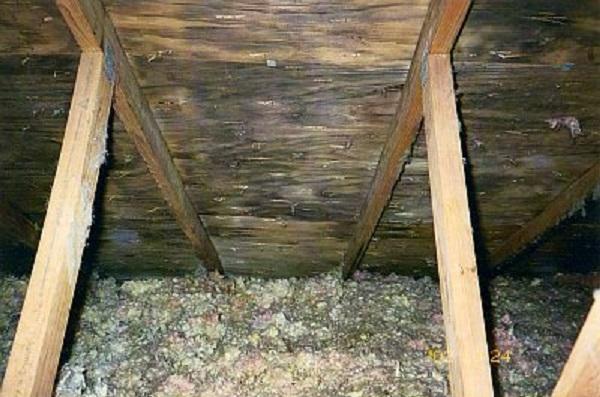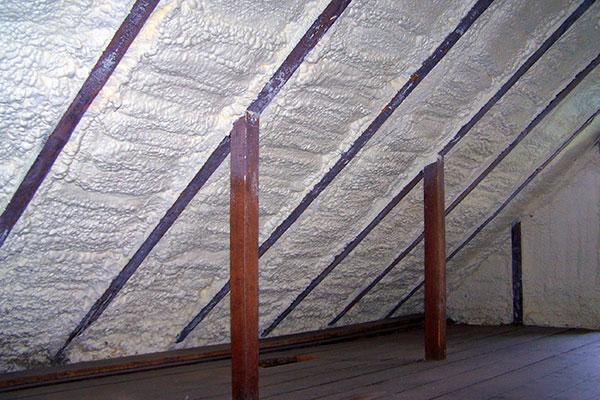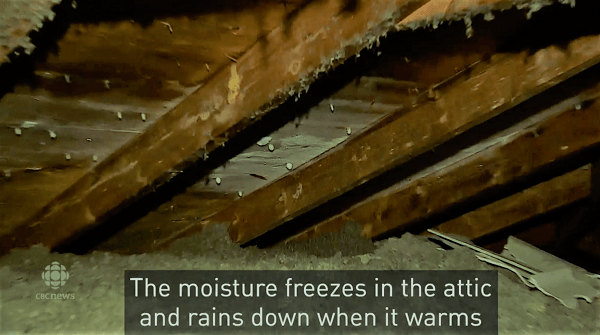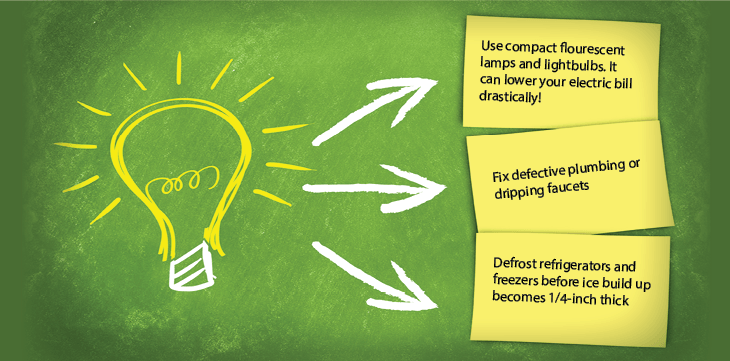When you think of mold, does your mind wander to that loaf of bread you left on the counter too long? That type of mold is relatively harmless and tossing it in the trash quickly fixes it.
Other types of mold and mildew that lurk around your home are much harder to get rid of and hazardous to both your family’s and home’s health.
When allergy season comes around, you might blame pollen for your symptoms. However, you’d be surprised that your sneezing and coughing may actually be caused by the mold growing in your attic.
According to the Center of Disease Control, inhaling mold spores can cause symptoms such as skin irritation, difficulty breathing, stuffy nose, itchy eyes, and fever.
Is mold the problem?
Mold is often a symptom of a bigger problem in your home: water damage. Water damage ranges in severity, from discoloration of ceilings to structural damage.
It’s important to note that water damage should not be taken lightly. Discolored ceilings can easily be repainted. But mold spores that are lurking inside your walls are a more serious problem.
Getting rid of mold can be extremely expensive, and in some cases, not possible. If you have a sneaking suspicion that mold is afflicting your home, take care of it immediately. One home in Texas had to be demolished because of a mold infestation.
Where does the mold come from?
Mold has relatively few needs: moisture, warm temperatures, and biodegradable material to munch on. Unfortunately for you, many poorly insulated homes serve mold spores these three needs on a silver platter.
Continue reading to discover where the problem areas may lie and what you can do to prevent mold spores.

It’s not you – it’s your HVAC System
Mold’s favorite partner in crime is your HVAC system. Consider your HVAC system as getaway car and a highway system in your home.
Pipes lead conditioned air into every room in your home, not only making it super easy for mold to spread but also to grow.
Even if you don’t crank the heat in your home very often, warm air in your HVAC system and humidity can lead to mold spores.
And your attic…
We can’t place all the blame on your HVAC system, however. Your attic is another culprit. Improper attic insulation can cause water damage. Remember, homes in warm climates need insulation too.
This insulation will help keep cool air in and moisture out. Moisture sources aren’t limited to heavy water dripping into your home. You need to make sure that there are no gaps in your insulation that allow humid air to sneak in.
Once mold begins to grow, it takes a road trip through your HVAC pipes, and it’s hard to convince it to leave your home.
Take matters into your own hands
It’s time to nip this problem in the bud. The source of your problem is your attic insulation. Your problem might not only be the lack of insulation, but the type of insulation.
We recommend that you install spray foam insulation in your home.
Spray foam has a much tighter seal than other types of insulation. It isn’t biodegradable, meaning that mold won’t have a food source to sustain it. Not only does Spray Foam reduce the chances of mold in your home, but it can drastically cut your heating/cooling bill.
Spray foam insulation is your answer. Call: Spray Foam insulation NYC. today to schedule a Free Insulation Assessment today. Milton is waiting on the line. 718-594-1976






